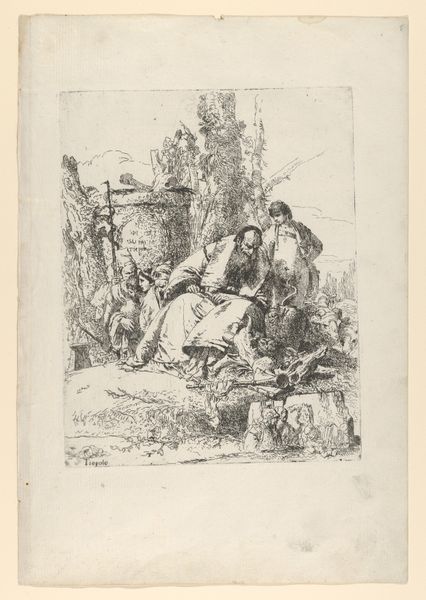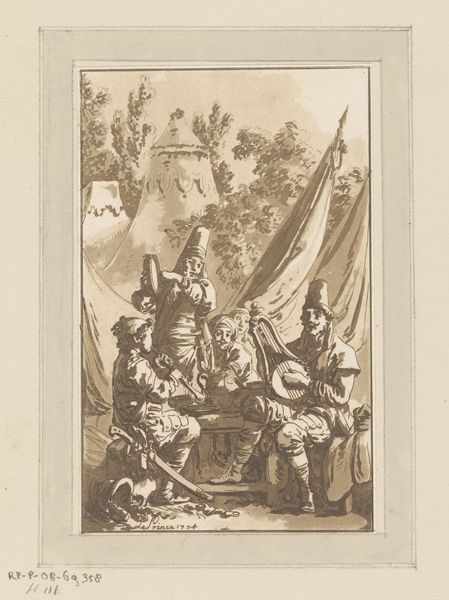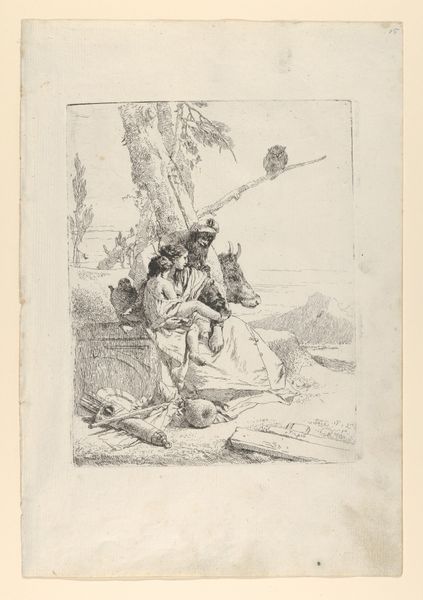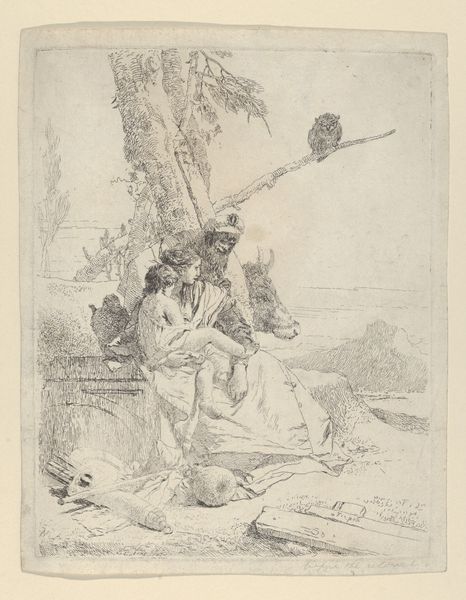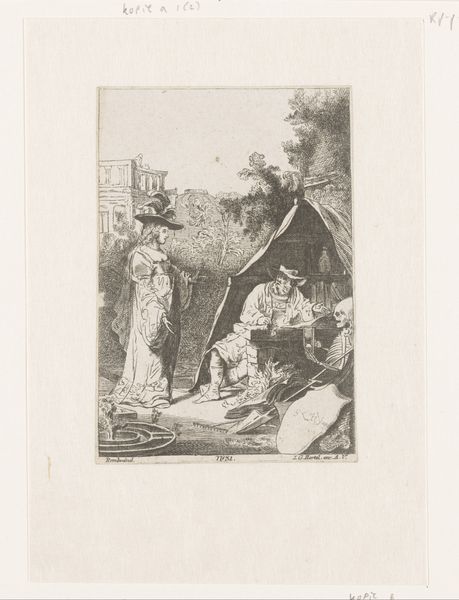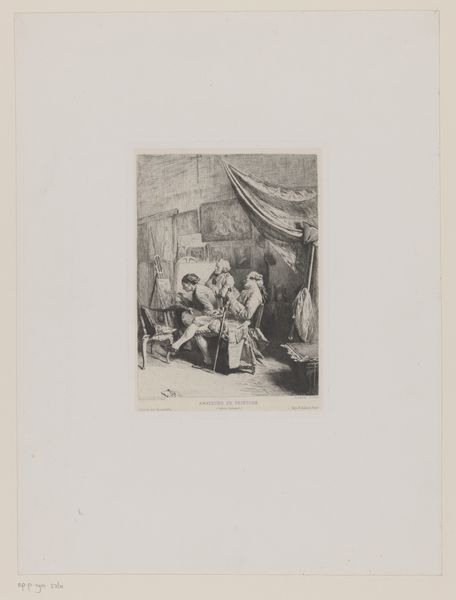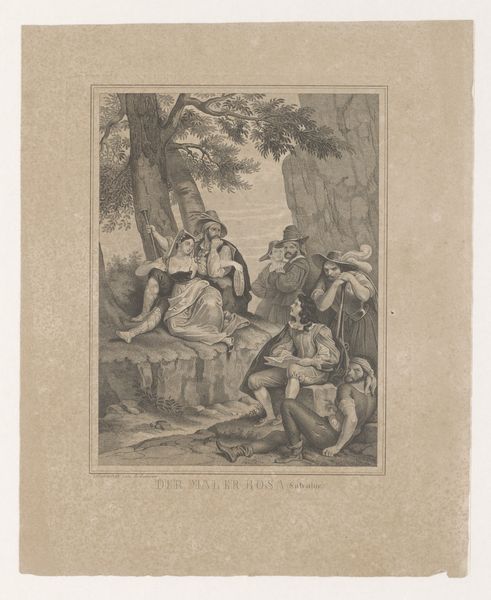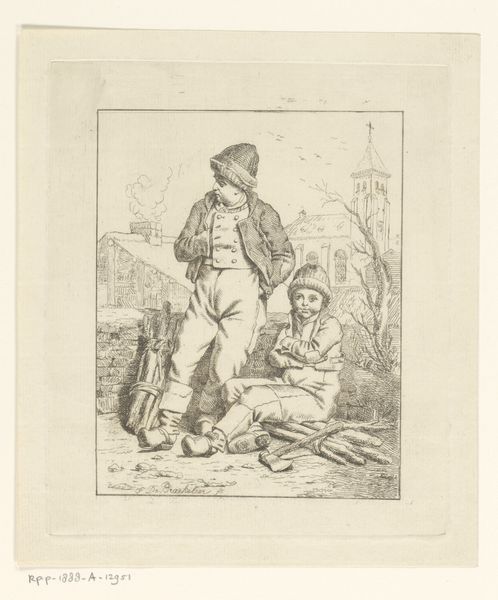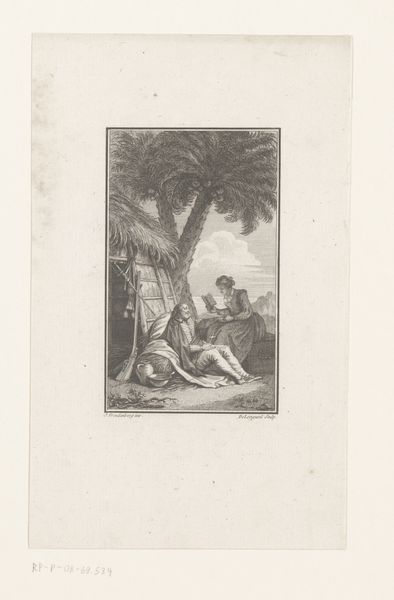
Dimensions: height 266 mm, width 199 mm
Copyright: Rijks Museum: Open Domain
Curator: The emotional tenor is immediate. I see grief, shock, maybe even a bit of fear in the crowd. It's striking how the artist renders such complex feeling with fine lines and shading. Editor: Yes, Johann Daniel Laurentz's print from 1763, titled "Opwekking van Lazarus," presents an iconic biblical scene with palpable drama. It’s an etching, so he's used acid to cut into the metal plate, resulting in these incredibly detailed lines on paper using ink. Curator: Thinking about it historically, this imagery plays into existing power dynamics. The idea of divine intervention becomes another layer in socio-political manipulation and expectation for salvation. How was the Church using art like this? Editor: During this time, we see similar images deployed in religious settings, but also circulated as more accessible, portable prints. Printmaking served as a method to disseminate ideas, and even social and political critique in visual form to new audiences. Here the resurrection narrative reinforces the power of the church and, obviously, that of Christ, while prompting contemplation about faith and mortality among viewers. Curator: The figures in the background all seem caught off guard, questioning. Look at the range of emotions on display. Do you think these characters question power, death, and spirituality? Editor: Undoubtedly. In Laurentz’s composition, note that Christ is elevated, set apart both physically by his positioning on what appears to be steps, and also visually as the primary source of light. Lazarus is in the foreground at a horizontal, more prone angle which amplifies this dichotomy. I can feel the tension embedded in the image. Curator: Absolutely, there’s tension in this seemingly holy miracle, perhaps pointing to larger inequalities within societal systems even today, not solely as an interpretation from a historical vantage point. The materiality lends itself to these darker and serious perspectives on existing order. Editor: The artist's rendering reinforces, then invites questioning to what are historically perceived to be static, sacred symbols. Curator: This engraving feels haunting now that we have contextualized the potential social dynamics depicted in Laurentz’s etching. I look at the piece quite differently! Editor: Yes, considering not just the narrative itself but the period and means of distribution shapes how we engage with this work, then and now.
Comments
No comments
Be the first to comment and join the conversation on the ultimate creative platform.
